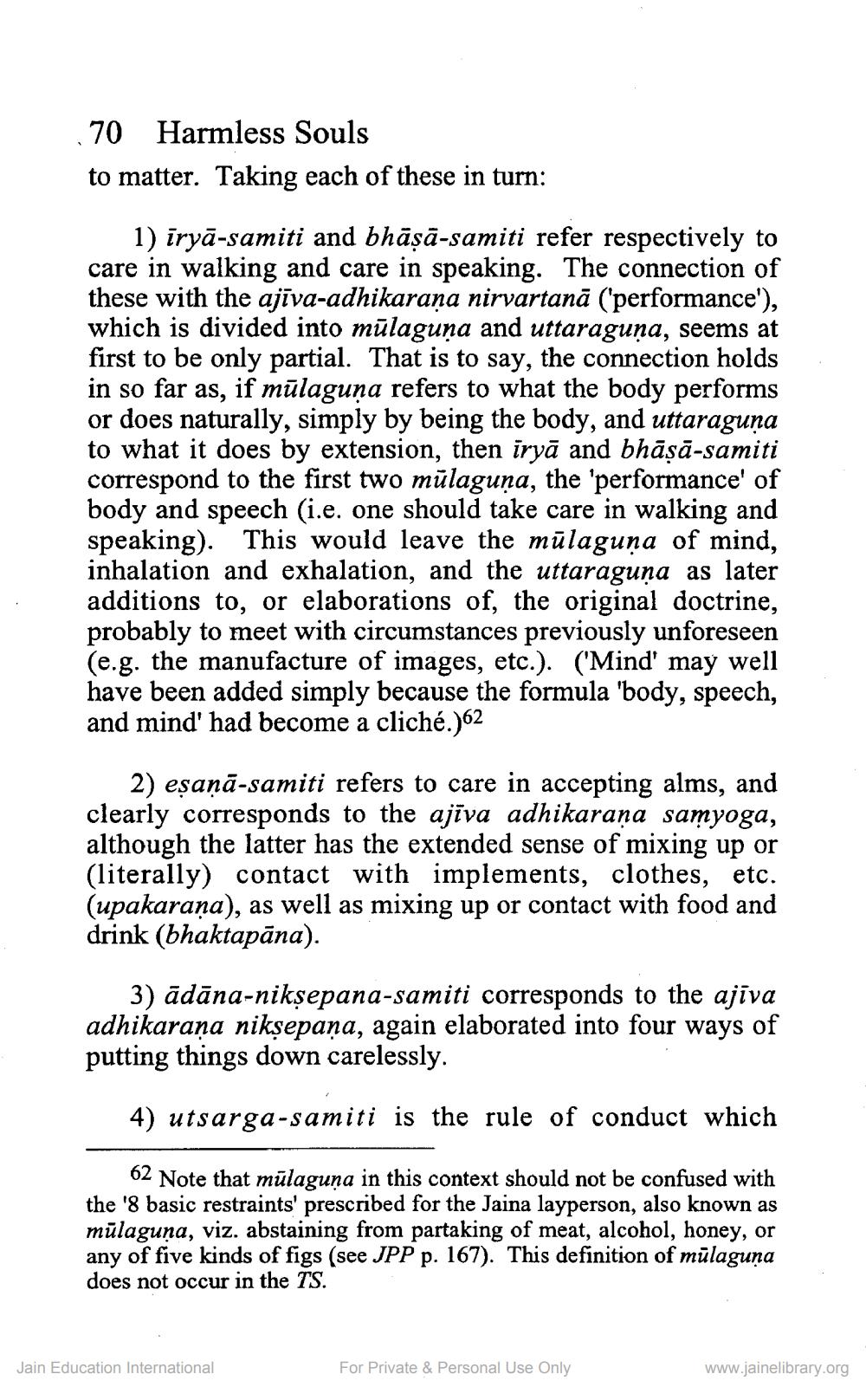________________
70 Harmless Souls to matter. Taking each of these in turn:
1) iryā-samiti and bhāṣā-samiti refer respectively to care in walking and care in speaking. The connection of these with the ajīva-adhikaraṇa nirvartanā ('performance'), which is divided into mūlaguna and uttaraguna, seems at first to be only partial. That is to say, the connection holds in so far as, if mūlaguna refers to what the body performs or does naturally, simply by being the body, and uttaraguna to what it does by extension, then iryā and bhāṣā-samiti correspond to the first two mūlaguņa, the 'performance of body and speech i.e. one should take care in walking and speaking). This would leave the mūlaguņa of mind, inhalation and exhalation, and the uttaraguņa as later additions to, or elaborations of, the original doctrine, probably to meet with circumstances previously unforeseen (e.g. the manufacture of images, etc.). ('Mind' may well have been added simply because the formula 'body, speech, and mind' had become a cliché.)62
2) eșaņā-samiti refers to care in accepting alms, and clearly corresponds to the ajīva adhikarana samyoga, although the latter has the extended sense of mixing up or (literally) contact with implements, clothes, etc. (upakaraņa), as well as mixing up or contact with food and drink (bhaktapāna).
3) ādāna-niksepana-samiti corresponds to the ajīva adhikaraṇa niksepaņa, again elaborated into four ways of putting things down carelessly.
4) utsarga-samiti is the rule of conduct which
62 Note that mūlaguna in this context should not be confused with the '8 basic restraints' prescribed for the Jaina layperson, also known as mūlaguņa, viz. abstaining from partaking of meat, alcohol, honey, or any of five kinds of figs (see JPP p. 167). This definition of mūlaguna does not occur in the TS.
Jain Education International
For Private & Personal Use Only
www.jainelibrary.org




